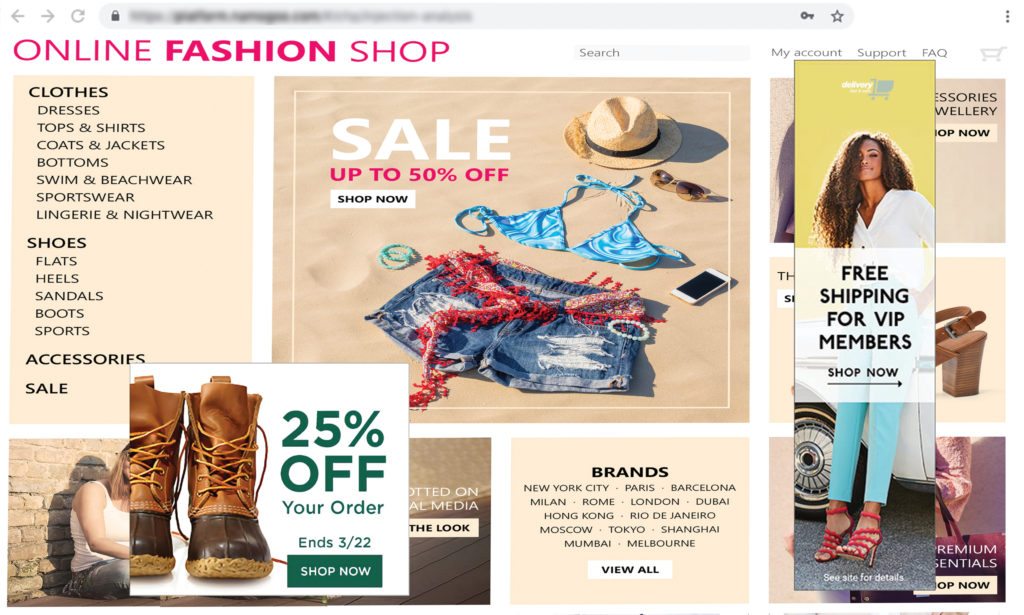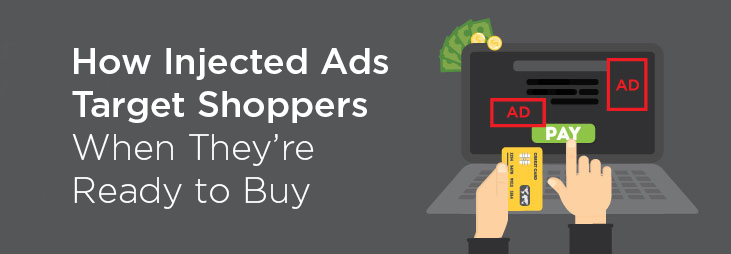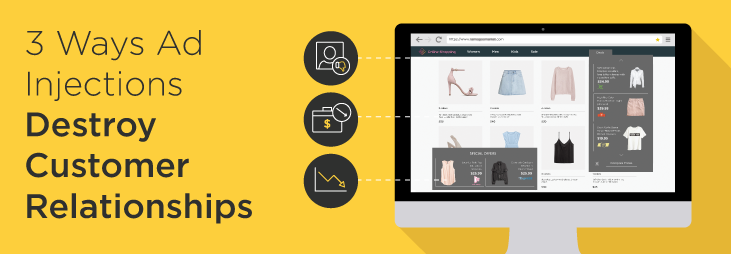How much effort does your company put into preparing shoppers to buy from your online store? How much do you invest in advertising? In building the optimal user experience? In researching your customers and their preferences? In building a brand name that will boost sales?
Of course, all of those investments of time and resources – of your time and resources – are designed to create a seamless customer journey leading a shopper to purchase from your online store. But what if, just before the end of that journey, a shopper were diverted from your store to a competing eCommerce website, where they ultimately decided to spend their money?
The numbers show that this is precisely the approach used most frequently by ad injectors engaging in Customer Journey Hijacking (CJH).
By stealing shoppers away through injected ads, CJH hurts online retailers’ conversion rates, sales, customer relationships, and total revenue. Adding to the problem, Namogoo’s data show that these unauthorized ads disproportionately target consumers near the end of the customer journey. This way, CJH not only focuses on your site’s visitors who are most likely to make a purchase – it steals away the fruits of your investments in marketing, sales, customer experience, support, and other areas.
How does Customer Journey Hijacking work?
Customer Journey Hijacking is a strategy in which ads are displayed to individuals who are shopping on an eCommerce website, often causing these promotions to appear as if they were part of the site. Rather than bombard users, these ads are delivered using a targeted approach. The businesses behind CJH aim to show ads for the right products to the right users, at the right times and in the right places, in order to maximize the chances that a user will click on an ad and make a purchase.
Here’s how it works:
- The consumer downloads free software such as a browser extension, program update, or mobile app that is bundled with adware and injected into their browser or device.
- The adware tracks the consumer’s online browsing activity and builds a personal profile based on their preferences, habits, and other characteristics.
- When the consumer visits an eCommerce website, the adware injects product ads, pop-ups, banners and in-text redirects on the user’s browser or device. These ads are tailored to the consumer’s personal profile in order display the most relevant and compelling product ads and promotions and can be displayed in every web page and section of the eCommerce site.
The injected ads can include pop-ups, banners, and/or product ads. When the user clicks on a link, they are redirected to a different site – a tactic that is often used on shoppers without their knowledge.
Example of Ad Injections

The majority of these injected ads (60-65%, according to data gathered by Namogoo) promote products sold by competing stores. In addition, many ads risk damaging an online store’s brand reputation by promoting adult websites or online gambling. At the same time, injected ads often hurt the customer experience by slowing page loading times.
All told, CJH reduces retailers’ overall conversion rates by 2-5%, resulting in a drop of 5-7% in revenue per visitor.
How do we know CJH aims at the last stages of the customer journey?
At Namogoo, we recently examined aggregate data gathered from the online stores we work with to determine which pages of any given eCommerce site are most likely to be affected by injected ads. We identified 10 page types that are present in a typical eCommerce website and evaluated the “hijacking rate” (the percentage of user sessions in which injected ads appear) for each of them.
Our data found that injected ads appear most frequently on order confirmation pages, with a whopping 40.43% hijacking rate. Checkout pages have the second-highest hijacking rate, at 28.99%.
What do these numbers tell us about how ad injectors target online consumers? For starters, we can see that ad injectors tend to target the most promising shopping sessions. By injecting ads specifically into pages that typically are only accessed by those consumers who are serious about making a purchase, these ads aim to nab the most interested shoppers. This approach also means that if a consumer is stolen away from one online store to a competitor, the competitor may well benefit from everything the first store has done to prepare that individual to make a purchase.
In addition, this data shows that these ad injections are extremely common. Although it affects “only” 15-25% of all online shopping sessions, we can see that it affects the most promising shopping sessions (sessions in which a user gets as far as the checkout and order confirmation pages) at far higher rates.
How else does CJH target the most promising sales opportunities?
This tendency is just one way in which CJH is designed to focus on the most interested customers, especially at the times when they are most likely to buy products online. Namogoo has also found that hijacking rates generally jump during peak shopping periods. For instance, in Q4 of 2018, the holiday shopping season pushed the overall hijacking rates for online marketplaces up to 25.05% for mobile sessions and 32.94% for desktop sessions (as compared to 13.42% for mobile sessions and 19.90% for desktop sessions in Q3).
And because consumers who shop online more actively are more likely to download free software, broswers and devices belonging to these particularly valuable customers are especially susceptible to ad injections. In fact, we consistently find that in spite of CJH, hijacked visitors have even higher conversion rates than visitors whose devices have not been found to have ad injections. (Of course, our findings also show that once injected ads are blocked for a given group of hijacked visitors, their conversion rates rise significantly.)
Then there is the issue of injected ads’ impact on long-term customer relationships. In a survey of online shoppers conducted by Namogoo, 80% of respondents said that if they were shopping in one online store when a pop-up ad led them to buy the same product at a lower price from a competitor, they would be more likely to visit the competitor than the first store the next time they want the same product.
Taken together, these numbers underscore what a problem CJH is for online retailers. Not only do injected ads appear during 15-25% of online shopping sessions, but they are most common among the most promising shoppers, during peak shopping periods, and near the end of the customer journey. When you factor in the threat that these ads pose to long-term customer relationships, it’s not hard to see the damage they could do to a retailer’s bottom line – both in the short term and in the long term.
How big of a problem is Customer Journey Hijacking within your online store? You can see for yourself with a free website analysis.






